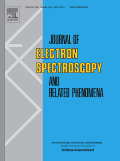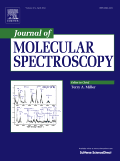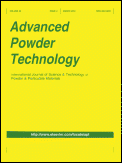
JOURNAL OF ELECTRON SPECTROSCOPY AND RELATED PHENOMENA
metrics 2024
Revealing the Dynamics of Condensed Matter Physics
Introduction
JOURNAL OF ELECTRON SPECTROSCOPY AND RELATED PHENOMENA, published by Elsevier, is a leading academic journal that has been disseminating pivotal research in the realms of atomic and molecular physics, condensed matter physics, and spectroscopy since its inception in 1972. With an ISSN of 0368-2048 and an E-ISSN of 1873-2526, this journal occupies a notable position in the scientific community, currently categorized in the Q2 quartile across multiple fields including Radiation and Physical Chemistry. The journal aims to present high-impact studies that offer groundbreaking insights into electron spectroscopy and its related phenomena, catering to researchers, professionals, and students who are eager to explore the intricacies of electronic structure and interactions. The Scopus rankings reflect a solid standing among peer journals, underscoring its relevance in advancing knowledge in specialized areas. The Netherlands-based journal continues to serve as a vital platform for scholarly exchange, encouraging open dialogues through its comprehensive articles and reviews, although it does not offer an open access option.
Metrics 2024
 0.51
0.51 1.80
1.80 1.70
1.70 101
101Metrics History
Rank 2024
Scopus
IF (Web Of Science)
JCI (Web Of Science)
Quartile History
Similar Journals

JOURNAL OF NANOPARTICLE RESEARCH
Unveiling the Potential of Nanoparticles for a Better FutureJOURNAL OF NANOPARTICLE RESEARCH, published by SPRINGER, is a pivotal platform in the interdisciplinary field of nanotechnology, encompassing atomic and molecular physics, bioengineering, chemistry, condensed matter physics, and materials science. Operating since 1999 and converging through 2024, this journal presents cutting-edge research and innovations in nanoparticle science, aiming to bridge theoretical studies with practical applications. With a diverse scope that attracts articles ranked in various Q2 and Q3 category quartiles across its fields, including Bioengineering and Nanoscience and Nanotechnology, it ranks favorably within Scopus metrics, ensuring high visibility and impact among researchers. While the journal operates under traditional access models, it remains a critical resource for professionals and students alike, empowering them to advance their knowledge and drive future discoveries in this rapidly evolving area of study.

APPLIED PHYSICS A-MATERIALS SCIENCE & PROCESSING
Exploring the Frontiers of Materials InnovationApplied Physics A: Materials Science & Processing, published by Springer Heidelberg, is an esteemed academic journal that has been at the forefront of innovative research since its establishment in 1995. With a strong focus on the intersection of physics, materials science, and engineering, this journal explores cutting-edge developments and applications that influence contemporary materials research. Categorized in the Q2 quartile across both Chemistry and Materials Science, it boasts respectable rankings in Scopus, affirming its influence and reach within the academic community. Although primarily a subscription-based journal, it is dedicated to disseminating high-quality research findings that advance our understanding in these fields. Researchers, professionals, and students alike can benefit from the journal's commitment to publishing comprehensive studies, methodological advancements, and insightful reviews that push the boundaries of knowledge in materials science.

JOURNAL OF MOLECULAR SPECTROSCOPY
Elevating the Standards of Molecular Spectroscopy ResearchJOURNAL OF MOLECULAR SPECTROSCOPY, published by Academic Press Inc Elsevier Science, serves as a pivotal platform in the fields of Atomic and Molecular Physics, Physical and Theoretical Chemistry, and Spectroscopy. With its inaugural issue dating back to 1957, this journal has maintained a rich history of disseminating significant research findings, contributing to an understanding of molecular behavior and interactions through various spectroscopic techniques. Although currently positioned in the Q3 quartile across its respective categories as per 2023 rankings, the journal aims to enhance its stature further by promoting rigorous and impactful studies that push the boundaries of knowledge in spectroscopy. While access to this publication is not open, the rigorous peer-review process ensures that the articles published maintain high standards of scientific excellence, appealing to researchers, professionals, and students seeking comprehensive insights into molecular spectroscopy. The journal's ISSN is 0022-2852 and its E-ISSN is 1096-083X.

EUROPEAN PHYSICAL JOURNAL D
Connecting Researchers to the Heart of Atomic ScienceEUROPEAN PHYSICAL JOURNAL D, published by SPRINGER, stands as a pivotal resource in the field of Atomic and Molecular Physics, and Optics. With an ISSN of 1434-6060 and an E-ISSN of 1434-6079, this journal has established itself as a platform for high-quality, peer-reviewed research, catering to a diverse audience of researchers, professionals, and students. Notably, the journal is classified in the Q3 quartile for 2023, reflecting a respectable standing within its category, ranked #123 out of 224 in Scopus, with a 45th percentile. Covering a wide range of topics through contributions that span from 1998 to 2024, the journal encourages the dissemination of innovative ideas and groundbreaking studies in the rapidly evolving domain of atomic and molecular science. By offering open access publication options, EUROPEAN PHYSICAL JOURNAL D enhances the reach and impact of its authors' work, ultimately fostering a greater understanding of complex physical phenomena.

ADVANCED POWDER TECHNOLOGY
Catalyzing Progress in Materials ScienceADVANCED POWDER TECHNOLOGY, published by Elsevier, is a premier academic journal dedicated to advancing the field of powder technology and its applications across various domains, such as chemical engineering and materials science. With an ISSN of 0921-8831 and an E-ISSN of 1568-5527, this journal has established itself as a leader in research dissemination, boasting an impressive Q1 ranking in both Chemical Engineering (miscellaneous) and Mechanics of Materials as of 2023. Further enhancing its reputation, it ranks 42nd out of 398 in the field of Mechanics of Materials and 36th out of 273 in General Chemical Engineering, demonstrating its significant impact within these disciplines. With a publishing history spanning from 1990 to 2024, ADVANCED POWDER TECHNOLOGY offers a wealth of knowledge and research findings, positioning itself as an indispensable resource for researchers, professionals, and students eager to explore cutting-edge advancements and applications of powder systems. Access to its latest research is available through institutional subscriptions, ensuring efficiency and support for ongoing academic endeavors.

CRYSTAL RESEARCH AND TECHNOLOGY
Bridging Research and Application in Materials ScienceCRYSTAL RESEARCH AND TECHNOLOGY, published by WILEY-V C H VERLAG GMBH, is a distinguished journal in the fields of Chemistry, Condensed Matter Physics, and Materials Science, with over five decades of continuous publication from 1966 to 2024. With its ISSN 0232-1300 and E-ISSN 1521-4079, the journal serves as a crucial platform for disseminating significant research findings, theoretical advances, and technological innovations related to crystal growth, structure, and properties. Holding a Category Quartile ranking of Q3 in the 2023 assessments across its disciplines, CRYSTAL RESEARCH AND TECHNOLOGY is recognized for its contribution to the scientific community, making it an essential resource for researchers, professionals, and students alike. While this journal is not open access, its robust publishing framework ensures that high-quality peer-reviewed articles remain accessible to a global audience. The importance of this journal lies in its commitment to advancing knowledge and fostering collaborations in crystallography and related fields.

New Materials Compounds and Applications
Fostering Collaboration in the World of Materials ScienceNew Materials Compounds and Applications is a pioneering journal published by JOMARD PUBLISHING, focusing on the latest advancements in materials science, particularly in the realms of analytical, inorganic, and organic chemistry. Since its inception in 2019, this journal has quickly established itself as a valuable resource for researchers and professionals seeking to explore innovative compounds and their applications across various fields. With an ISSN of 2521-7194 and an E-ISSN of 2523-4773, New Materials Compounds and Applications is indexed in Scopus, demonstrating its scholarly impact, albeit currently positioned in the Q3 and Q4 quartiles for several chemistry categories. The journal serves as a platform for disseminating research findings and fostering collaboration among scientists in Azerbaijan and beyond. Although it operates under a traditional access model, the journal aims to bridge the gap between theoretical studies and practical applications, making it essential reading for students and professionals looking to stay updated in the dynamic landscape of materials chemistry.

Annual Review of Physical Chemistry
Empowering Researchers with Comprehensive ReviewsAnnual Review of Physical Chemistry, published by Annual Reviews, stands as a premier source of comprehensive review articles in the field of physical chemistry. With a prestigious impact factor and a strong reputation reflected in its Q1 rankings in both Physical and Theoretical Chemistry and Medicine (Miscellaneous), this journal is essential for researchers seeking to stay at the forefront of advancements in the discipline. Covering a wide array of topics, the Annual Review of Physical Chemistry synthesizes the latest findings, trends, and methodologies, providing a vital resource for professionals and students alike. Although it does not offer open access, its scholarly rigor and in-depth analyses ensure it occupies a critical space in academia. Its consistent publication since 1975 guarantees that it has historical significance and relevance, making it a cornerstone for those engaged in cutting-edge research within the realm of physical chemistry.

Materials Today Communications
Connecting Innovators in Materials Science and BeyondMaterials Today Communications, published by ELSEVIER, stands as a prominent platform within the fields of Materials Chemistry, Materials Science, and Mechanics of Materials. With an open access format, this journal facilitates global dissemination of knowledge, aimed at enhancing collaboration and innovation among researchers, professionals, and students worldwide. Established in 2014 and converging through 2024, the journal has rapidly ascended through the ranks, achieving a commendable Q2 category status in multiple relevant categories. Specifically, its Scopus rankings highlight its influence, with rankings in the 64th to 69th percentile in various materials science domains. A key resource for those engaged in cutting-edge materials research, Materials Today Communications provides insightful coverage of contemporary advancements, bridging the gap between theoretical exploration and practical application.

Korean Journal of Materials Research
Connecting Ideas, Inspiring DiscoveriesKorean Journal of Materials Research is a pivotal publication in the field of materials science, offering a platform for innovative research and comprehensive reviews in miscellaneous materials applications. Published by the MATERIALS RESEARCH SOC KOREA, this journal has been a valuable resource since its inception in 2007 and continues to disseminate vital findings through 2024. Although currently categorized in Q4 of the Materials Science quartiles, the journal is committed to advancing knowledge and fostering research collaboration within the scientific community. With an ISSN of 1225-0562 and an E-ISSN of 2287-7258, the journal aims to bridge gaps in research and practice, appealing to a diverse audience of researchers, professionals, and students interested in the latest advancements in materials science. While access to content may not be open, the journal's impact in the regional and global research landscape is steadily growing, as indicated by its Scopus ranking in the 7th percentile of General Materials Science. Engage with the Korean Journal of Materials Research to stay at the forefront of materials innovation!